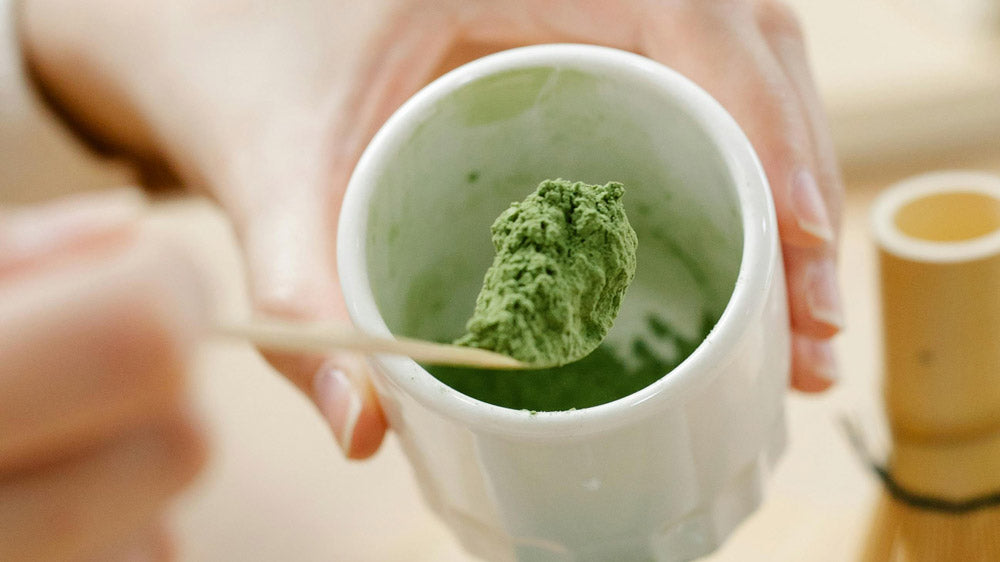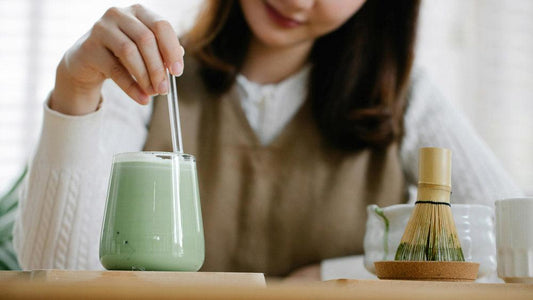
How to store matcha tea: our guide to optimal preservation
Sébastien GELLEHave you opened a jar of matcha tea with a beautiful green color, umami and velvety taste ? Good news: you have just adopted one of Japan's finest teas. But be careful! Storing this powdered green tea plays an essential role in preserving its quality, taste , and freshness.
At Blossom Matcha, we believe every cup should deliver the same experience as the first: fine powder, delicate aromas, vibrant color. Here's how to achieve it.
Importance of Proper Storage of Matcha Tea
Matcha is a fragile product. Exposed to light, air, humidity, or poor temperature, this tea powder oxidizes quickly. The result: a loss of aroma, a yellowing color, and a less pleasant taste.
Proper storage is therefore the secret to preserving the freshness and energy that this tea brings to your daily life.
Why matcha tea requires special storage
Unlike other teas, matcha isn't loose leaf: it's an ultra-fine powder made from stone-ground Tencha leaves. This form allows it to dissolve directly in water, but it also makes it very sensitive to external elements.
Every time you open your box or sachet, the powder comes into contact with air. And air, like light and heat, alters its structure, diminishing its beneficial effects and natural flavors.
The benefits of storing your matcha tea properly
Storing your matcha tea properly means:
- Preserve its bright green color, a sign of good quality;
- Keep its vegetal aromas and its umami taste;
- Protect antioxidants and nutrients;
- Avoid loss of freshness and lump formation;
- Enjoy a cup that is always harmonious, without bitterness.
In short, proper storage is the key to enjoying each cup as if the matcha had just been opened.
Ideal conditions for storing matcha tea
To preserve the quality of your matcha, three essential conditions must be met:
- A cool, dry place;
- An airtight container;
- An absence of direct light.
Matcha is best stored at a stable room temperature, between 15°C and 20°C. Avoid sudden changes: the contrast between hot and cold often causes condensation, the powder's sworn enemy.
Factors that influence the quality of matcha tea
The quality of matcha depends on its freshness, but also on its environment:
- Air: promotes oxidation and alters color ;
- Light: degrades chlorophyll;
- Moisture: clumps the powder and reduces flavor;
- Heat: accelerates the loss of aromas.
Each of these factors works slowly, but together they can transform a vibrant matcha into a dull, tasteless product in just a few months.
Temperature and humidity: the enemies of matcha tea
Temperature and humidity are the two most critical elements. If your environment is hot or humid (like in the summer in Canada), it's best to store matcha in a refrigerator.
But be careful: always open the box only after letting it return to room temperature. Otherwise, condensation can form small lumps and alter the texture of the powder.
Conversely, if the room is dry and temperate, a simple closet away from light will suffice. The important thing is to avoid excess heat and humidity .
Conservation methods and tips
Here are some tips to extend the life of your matcha:
- Close your box tightly after each use;
- Avoid using a wet spoon;
- Never leave the powder in the open air for more than a few minutes;
- If you buy in large quantities, keep some in the refrigerator and keep a small container for everyday use;
- Write the opening date on the lid to track its freshness;
- Always keep your matcha away from strong odors (coffee, spices, onions, etc.).
These simple tips ensure optimal preservation and an unchanged sensory experience with every cup.
Recommended containers for matcha
The container is essential to preserve the quality of your tea . Choose:
- An airtight container made of aluminum or stainless steel;
- An opaque resealable bag, ideally vacuum-packed;
- Avoid clear glass.
Shelf life and storage techniques
Unopened matcha typically lasts 6 to 12 months depending on storage conditions. Once opened, it will stay fresh for 2 to 3 months. To extend its shelf life:
- Store the box in a cool place;
- Avoid repeated exposure to air;
- Divide the quantity in half: one small jar for everyday use, the rest in the refrigerator. This method limits the risk of oxidation and preserves the authentic taste of the powder for longer.
Signs Your Matcha Is Being Stored Wrong
A poorly stored matcha is easily recognized:
- Its color changes, it becomes yellowish, a sign of oxidation;
- It gives off dull or slightly rancid odors;
- Its taste is bitter or earthy;
- The powder forms clumps or sticks to the spoon.
In this case, your matcha is no longer at its full potential. It's not dangerous, but it has lost much of its flavor and benefits.
How to Recover Improperly Stored Matcha Tea
If your matcha has lost some of its freshness, don't throw it away! You can still use it for:
- Iced lattes , where the taste will be softened by the milk;
- Sweet recipes (cakes, crepes, matcha tiramisu);
- Homemade masks for the skin (thanks to its antioxidants).
But for your most precious tasting moments, it's best to start with a fresh box, carefully stored away from light and heat.
Frequently asked questions about storing matcha tea
Can you freeze matcha?
Yes, but only for long-term storage. Use an airtight bag and let it return to room temperature before opening to avoid condensation.
Can matcha go bad?
Yes, after a certain time, the quality decreases. It doesn't become harmful, but it loses its taste and color.
Should I put it in the refrigerator?
If the room temperature is high, this is preferable. Otherwise, a cool, dry place will suffice.



